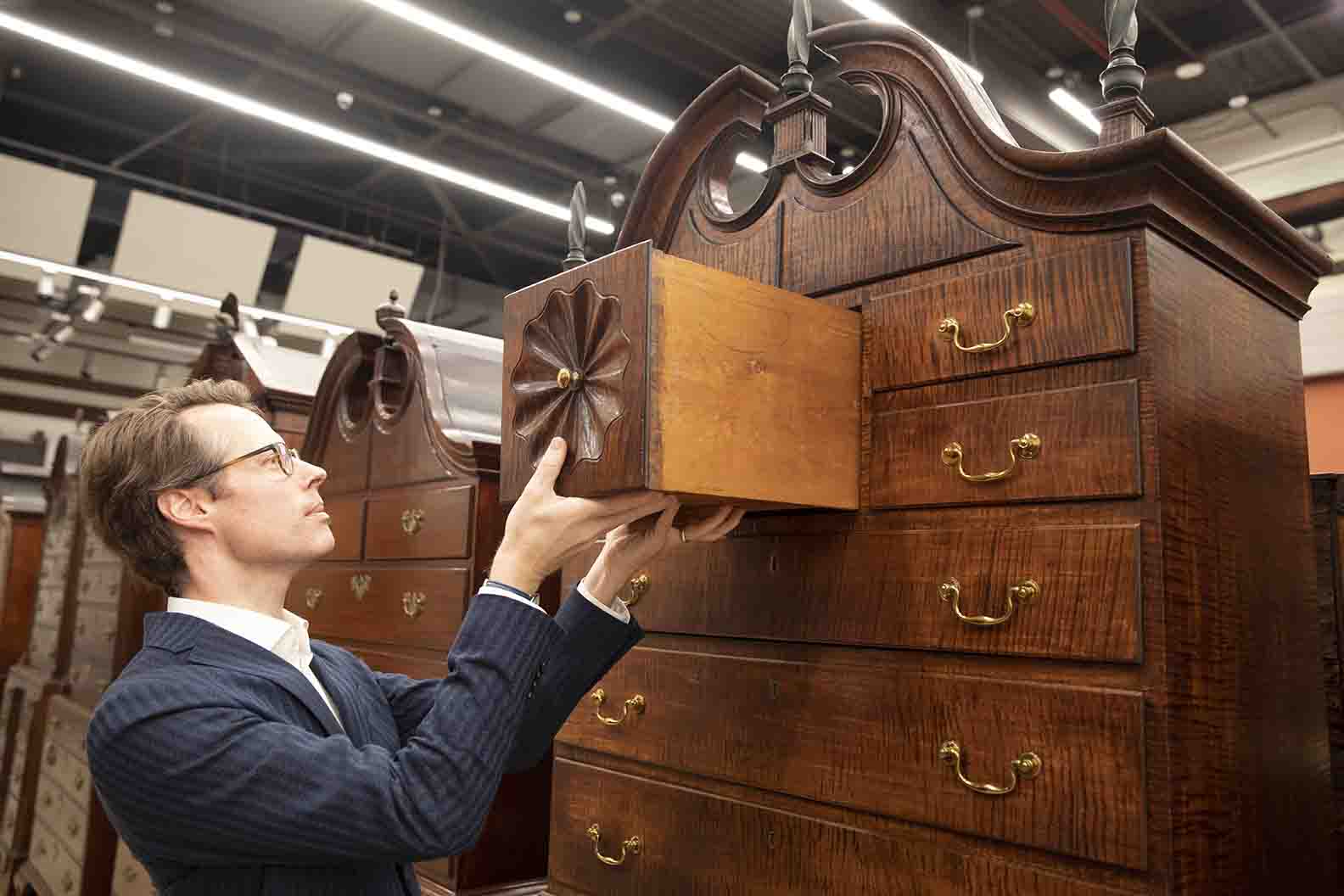
Courtesy of YUAG
When searching for courses, some Yale students might be surprised by the number of classes that draw on the Yale University Art Gallery’s extensive furniture collection. For many years, this collection was housed at 149 York St., a location within walking distance of central campus but with subpar facilities. Starting this fall, students taking courses related to the collection will travel to its new home on Yale’s West Campus.
On Sept. 10, the YUAG opened the Leslie P. and George H. Hume American Furniture Study Center and the Anne T. and Robert M. Bass Sack Family Archive in West Campus’ Collection Studies Center. The Center functions as a textbook of American furniture from 1650 to the present — a resource being written and cared for by Yale’s American Decorative Arts curators, Patricia Kane GRD ’87 and John Stuart Gordon.
Gordon noted that the Furniture Study Center is a new member of a “growing constellation of cultural spaces” on West Campus, including the Margaret and Angus Wurtele Study Center and the Conservation Laboratory. He added that storing museum collections is an expensive pursuit but a worthwhile one, given the multitude of ways such a space serves academic inquiry.
“Study centers enable engagement in many different ways,” Gordon said. “There’s no glass over the objects and we want this kind of accessibility. When you walk into a museum, it’s a more rarified experience. It’s a superlative example of something, in juxtaposition with something else, telling a story a curator has constructed. In a study center, the visitor is able to hone their visual knowledge.”
The Center also houses didactic displays to guide visitors through the objects on view. Gordon said that furniture specialists often “speak their own internal language.” Yet the use of such jargon limits the accessibility of the material. To improve the educational process, displays across the Center explain topics such as the chronology of specific types of furniture hardware like screws and nails.
Gordon said that having displays explain “those wonderfully dorky things” helps “bring the space to life as a teaching tool.” He added that he hopes “visitors will go away with a better understanding of the material.”
The move from 149 York St. to West Campus was conceptualized over a decade ago amid concerns about the safety of the furniture. 149 York St. is a multi-purpose venue that also houses School of Drama offices, rehearsal rooms and the Yale Alumni Magazine. The building cannot be climatized to museum standards and has experienced the occasional burst pipe or flood — to the detriment of the valuable wooden objects stored within its basement.
The West Campus location, which has state-of-the-art air conditioning, offers more space and mobility for the objects. The Center also has crucial space for seminar rooms.
According to an article published in the News in spring 2018, the inaccessibility of West Campus worried curators and professors. History of art professor Edward Cooke voiced concerns about his ability to teach his first-year seminar on American furniture if the location proved inaccessible. Since then, the curators fundraised to have a dedicated shuttle leaving every hour from the YUAG and every half hour from West Campus. Cooke is teaching the seminar this semester.
“Professor Cooke is thinking about ways to use the shuttle time to think about readings, or integrate question-and-answer time, working the commute into the curriculum,” Gordon said. “We’ll probably see more courses that are taught between various locations.”
According to the YUAG press release, weekly public tours of the Center — which have been a roughly decade-long tradition — will resume on Friday, Sept. 13 at 12:20 p.m. In the future, special thematic tours will be offered by various curators and scholars.
Kane will lead the first thematic tour on Sept. 27. Her presentation will be titled “Tulipmania: The 17th-Century Joined Furniture of the Connecticut River Valley.”
Rianna Turner | rianna.turner@yale.edu







